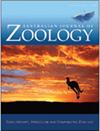Tracking the spread of the eastern dwarf tree frog (Litoria fallax) in Australia using citizen science
IF 1
4区 生物学
Q3 ZOOLOGY
引用次数: 0
Abstract
ABSTRACT An increasing number of species are establishing populations outside of their native ranges, often with negative ecological and economic impacts. The detection and surveillance of invasive species presents a huge logistical challenge, given the large spatial regions in which new populations can appear. However, data collected through citizen science projects are increasingly recognised as a valuable source for detection and monitoring of invasive species. We use data from a national citizen science project, FrogID, to quantify the spread of the eastern dwarf tree frog (Litoria fallax) outside its historical native range in Australia. Of 48 012 records of L. fallax in the FrogID database, 485 were located far outside the historical native range of the species. L. fallax has established geographically large populations hundreds of kilometres away from its native range, and these appear to be spreading in extent over time. These populations have resulted in novel species co-occurrences, with L. fallax now co-occurring with at least two frog species not present in their native range. Although the impacts of the invasive populations of L. fallax remain unknown, our work highlights the value in leveraging citizen science projects to detect and monitor native species that can become invasive far outside their historical range.利用公民科学追踪澳大利亚东部矮树蛙(Litoria fallax)的传播
越来越多的物种在其原生范围之外建立种群,往往产生负面的生态和经济影响。考虑到新种群可能出现的大空间区域,对入侵物种的检测和监测提出了巨大的后勤挑战。然而,通过公民科学项目收集的数据越来越被认为是检测和监测入侵物种的有价值的来源。我们使用国家公民科学项目FrogID的数据来量化东部矮树蛙(Litoria fallax)在澳大利亚历史上的原生范围之外的传播。在FrogID数据库中的48 012份记录中,有485份位于该物种的历史本地范围之外。fallax在距离其原生地数百公里的地方建立了地理上较大的种群,并且随着时间的推移,这些种群的范围似乎正在扩大。这些种群导致了新物种的共存,现在,fallax与至少两种不在其原生范围内的青蛙物种共存。虽然外来入侵物种的影响仍然未知,但我们的工作强调了利用公民科学项目来检测和监测可能远远超出其历史范围的入侵本地物种的价值。
本文章由计算机程序翻译,如有差异,请以英文原文为准。
求助全文
约1分钟内获得全文
求助全文
来源期刊
CiteScore
2.40
自引率
0.00%
发文量
12
审稿时长
>12 weeks
期刊介绍:
Australian Journal of Zoology is an international journal publishing contributions on evolutionary, molecular and comparative zoology. The journal focuses on Australasian fauna but also includes high-quality research from any region that has broader practical or theoretical relevance or that demonstrates a conceptual advance to any aspect of zoology. Subject areas include, but are not limited to: anatomy, physiology, molecular biology, genetics, reproductive biology, developmental biology, parasitology, morphology, behaviour, ecology, zoogeography, systematics and evolution.
Australian Journal of Zoology is a valuable resource for professional zoologists, research scientists, resource managers, environmental consultants, students and amateurs interested in any aspect of the scientific study of animals.
Australian Journal of Zoology is published with the endorsement of the Commonwealth Scientific and Industrial Research Organisation (CSIRO) and the Australian Academy of Science.

 求助内容:
求助内容: 应助结果提醒方式:
应助结果提醒方式:


